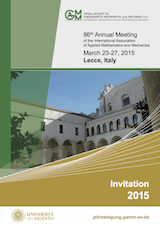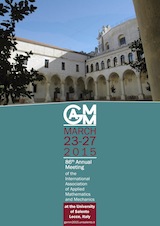MS1 - Multi-Scale Modeling of Ferroic Functional Materials
In the minisymposium, latest developments related to two central aspects of multi-scale modeling of ferroic functional materials will be discussed, namely techniques for the modeling at different scales, e.g. discrete atomistic (MD) simulations, phase-field approaches, energy relaxation techniques, and scale-bridging techniques, e.g. micro-mechanics and direct micro- macro transitions through numerical homogenization. Such tools allow the computation of effective properties for multi-functional composites, as well as advanced multi-scale analyses of critical constitutive mechanisms related, for instance, to micro- and domain structure evolution, fracture, damage or fatigue, in a physically well-motivated manner.
organizers:
 |
Marc-Andre Keip Stuttgart mail, home page |
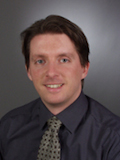 |
Björn Kiefer Dortmund mail, home page |
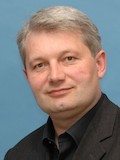 |
Jörg Schröder Duisburg - Essen mail, home page |
 |
Bob Svendsen Aachen mail, home page |
MS2 - Applications of the Virtual Element Method
The Virtual Element Method is a brand new methodology, related to Mimetic Finite Differences (MFD), to XFEMS, and more generally to the extension of Finite Elements to polygonal and polyhedral decompositions. Unlike MFD, they are a natural Galerkin method, and unlike other extensions of FEM they provide the exact satisfaction of the Patch Test in a number of relevant problems.
The minisymposium would deal with the latest applications of the method, including mixed formulations, time dependent problems, convection or reaction dominated flows, topology optimization, fractured domains and possibly several others. The method is quite new, since the first paper appeared in 2013, and rapidly developing, so that we can expect several important novelties.
organizer:
 |
L. Beirao da Veiga Milano mail, home page |
 |
Franco Brezzi Pavia mail, home page |
 |
Donatella Marini Pavia mail, home page |
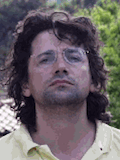 |
Alessandro Russo Milano-Bicocca mail, home page |
MS3 - Topological Defects in Solids
Topological defects have been an active field of study since the pioneering work of Volterra on the mathematical theory of dislocations a century ago, and are very important also in mechanics, for example in the study of the plastic behavior of solids. Relevant connections to topological defects in Ginzburg-Landau models, used to describe for example superconducting or magnetic materials, have meanwhile become apparent. Recent progress in the mathematical analysis of some models generated a renewed interest, which extends from the energetic (variational) treatment to evolution problems.
In this minisymposium we intend to address some of the most interesting recent results on models for topological defects in solids, focusing on the common mathematical structure and spanning over different applications, which include in particular dislocations and plasticity, singularities in elastic plates, as well as Ginzburg-Landau models.
organizers:
 |
Sergio Conti Bonn mail, home page |
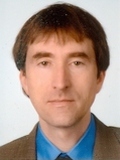 |
Georg Dolzman Regensburg mail, home page |
MS4 - Optimal Control and Hybrid Systems
On the one hand, optimal control of real physical processes is of crucial importance in all modern technological sciences. On the other hand, extensive research has been made in the field of hybrid systems in the last decades, since it is well known that the behavior of modern technical systems can only be modeled appropriately by a combination of continuous dynamics and discrete events models. Relevant applications are for example mechanical systems with impacts, power and electronic systems with switches, or complex networks whose coupling structure changes at discrete events. A great interest lies in the optimal control of hybrid systems since this includes not only the computation of optimal control trajectories for the continuous parts but also an optimization of the discrete variables.
The topics in this minisymposium are the analysis and control of hybrid and switched systems, switching-time optimization, mixed-integer optimization for ODE and PDE systems as well as applications in engineering systems and robotics such as bipedal walking.
organizers:
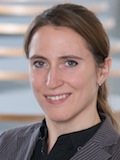 |
Sina Ober-Blöbaum University of Paderborn mail, home page |
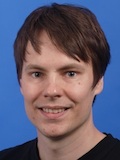 |
Stephan Trenn University of Kaiserslautern mail, home page |
MS5 - Mechanics in an Interdisciplinary, Multiphysics Environment, Transforming Materials Sciences and Biology
Mechanics belongs to the oldest branches of physics, being characterized by an exceptional degree of maturity, and having fostered innumerable technological advancements, pervading daily life as well as breathtaking engineering deeds. In this context, mechanics sometimes appears as a closed, somehow "completed" discipline, in contrast to emerging branches of science, such as life sciences or biotechnology.
This symposium is to show concrete examples that the aforementioned appearance may be regrettable, but more importantly, that it is actually not supported by reality: In fact, engineering mechanics has turned out as a game changer in topics where it would not be expected in the first place: examples at the mini symposium will cover bio-nano-technology, systems biology, molecular chemistry, and bio-physics, to name just a few.
organizers:
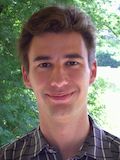 |
Christian Hellmich Wien mail, home page |
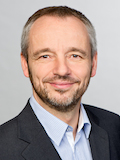 |
Wolfgang A. Wall München mail, home page |

